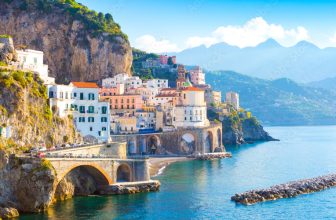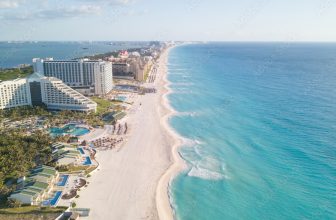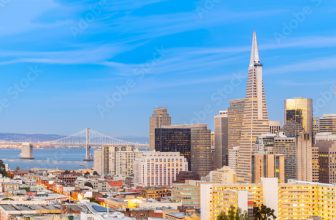
The history of London begins with the Roman occupation of Britain in 410 C.E. In the sixth century, the Anglo-Saxons began to settle the area, creating a new settlement, known as Lundenwic, about 1000 yards upstream from the Roman city, around Covent Garden. The eighth century saw the rebirth of London, and trade across the English Channel resumed. By the fourteenth century, the city was flourishing and was a global financial center.
Architecture
The city is home to some of the finest examples of classical and art deco architecture in the world. Some of the most important buildings are found in Mayfair, Bloomsbury, Kensington and Regents Park. Some of the most beautiful buildings in London date back to the 17th century. The Georgian period spanned 1840 to the mid-nineteenth century. Architects from this time period included John Nash, Christopher Wren, and Robert Adams.
This uplifting exhibition features works by prominent British architects, and artists from other countries who immigrated to the city. Several works address issues such as knife crime, the ramifications of the Windrush scandal, and lost potential. Despite the sad reality of the modern era, the work in this exhibition highlights the many positive aspects of the City of London. If you can manage to get to the exhibition in time, you’ll leave feeling inspired and informed.
If you’re interested in medieval architecture, you’ll want to take a look at the Tower of London. It was first constructed during the reign of Edward the Confessor, but was later rebuilt in Gothic style during Henry III’s rule. The Gothic architecture of the cathedral is reminiscent of the architecture found in French cathedrals. The cathedral also has an ornate fan-vaulted ceiling. Old St Paul’s Cathedral is another example of medieval architecture in London.
Film industry
The Film industry in the UK is a growing sector and the city has a number of post-production facilities. Approximately 25% of all film expenditure in the UK is spent on post-production. As post-production work is easily tradable, firms in Soho can work for clients in other countries. The high standard of work made in London makes the region well placed to compete in international markets. However, the sector does face a number of challenges, including audiovisual piracy.
There are several reasons why London is a popular film-making location. The city’s public transport network is superb, and the vast range of shooting locations is readily available. Studios are close by, and London has a skilled workforce in every department. With leading post-production facilities in the world, London is at the cutting edge when it comes to international productions. A film crew needs to be well-qualified to get the job done.
The film industry in London is a major economic driver. Films created in London contribute PS1.3 billion in revenue. In addition to supporting thousands of jobs, film productions help boost London’s reputation internationally. Screen London is an umbrella organisation for the film industry in London, which supports 500 organisations and acts as a global champion. It provides troubleshooting advice for major productions and connects filmmakers to financiers. It also promotes London as a destination for film-making, providing a hub for producers and distributors to showcase their work.
Business district
The central business district is a part of the city that contains the principal streets and public buildings. It has a diverse range of land uses including residential, commercial, administration, and consumption. It generates a high volume of traffic and serves as the hub of a transportation network throughout the region. Westminster is the undisputed center for business and government, but the district of Camden is also a hub for creative industries. In addition, Lambeth and Southwark have lower concentrations of office space, but they are home to local government offices and accountants.
The Financial District is home to a number of tall buildings, many of which are used for financial activities. Most of these are located around Fenchurch Street, Leadenhall Street, and Bishopsgate. The Barbican Estate is home to three tall residential towers, as well as a commercial CityPoint tower. The former Drapers’ Gardens building was demolished in 2007 and replaced with a shorter tower. The London Underground’s roundel features City dragons and has two stations in the area.
The City of London is the area where most of the financial trade in the United Kingdom takes place. Though it covers only one square mile, it is home to many people, including the Stock Exchange, the Bank of England, and St. Paul’s Cathedral. A recent Morgan Stanley study showed that only about a third of white-collar workers were back to work by the end of August. Despite these statistics, it remains unclear how much of an impact the recent snowstorm had on the financial sector.
Changing of the Guard
The Changing of the Guard is a traditional military ceremony that takes place in front of Buckingham Palace, a British royal residence. The guards, wearing bear hats and red coats, perform a traditional parade, complete with marching bands. Visitors are encouraged to watch the ceremony in person if possible. You can find out more about the ceremony by checking out our guide to Changing of the Guard in London.
The ceremony originally took place at the Palace of Whitehall, the official residence of the British monarch until 1689. Afterwards, the Royal household moved to St James’s Palace. In 1837, the ceremony moved to Buckingham Palace, where Queen Victoria lived. She was born in this palace, and the ceremony was moved there to honor the monarch. Today, the ceremony is held every day, but the schedule varies depending on the day.
The Changing of the Guard ceremony begins with the Old and New Guards marching to the Palace. The Old Guard joins the soldiers in the palace’s forecourt. The New Guard, made up of soldiers from the royal household, then leaves Wellington Barracks and marches in to the forecourt of the palace. They present their arms to the Old Guard, and the Old Guard Captain hands over the ‘key to the palace’ to the new group.
Clock tower
The Clock Tower in London is a symbol of London and the United Kingdom. While the clock has come to symbolize Britain as a whole, its presence on the London skyline has become an iconic symbol. It is often used to convey an image of Britain in a general way, often shown alongside a Routemaster bus or Hackney carriage. The actual location of the clock is rarely mentioned, but the symbol does suggest a particular place in London.
The Great Clock of Westminster is a large, striking structure on top of the London Eye. Its face is made of opal glass and is surrounded by a carved iron framework. The clock is heavily gilded. The clock is said to have the largest tolerance of any clock in the world. While the clock faces may differ from the actual time, they will always be close. This is a remarkable feat of architecture.
A permanently-installed microphone in the tower sends the chimes through a cable to Broadcasting House. The sound of the chimes is also heard on many television programs, including the Simpsons, Doctor Who, and Futurama. Its chiming is featured in several films, including Peter Pan, 101 Dalmatians, and Shanghai Knights. It has even been featured in Stephen Sondheim’s musical Sweeney Todd.
Culture
British people are famous for their stoicism and’stiff upper lip.’ Their hard-earned status has been forged by years of wars and the subsequent post-war period. They are also proud of their social progress and feel that their country is the result of generations of hard work. This attitude is apparent in their slogan, ‘Keep Calm and Carry On.’ However, British culture is far more complex than the stereotypes may suggest.
The diverse cultural environment of London is evident in the city’s landmarks, such as Big Ben and Buckingham Palace. Other cultural icons are the red telephone box, the tube map, and the black taxi. London is home to many different nationalities, and the resulting diversity of cultures has helped shape its culture. The diversity of London’s population makes it an incredibly fascinating place to explore. Whether you are looking for an arts and culture experience, London has something to offer for everyone.
The Royal Academy of Arts’ Summer Exhibition is one of the highlights of London’s summer social calendar. Though the 2020 edition was cancelled because of coronavirus restrictions, it is still expected to be bigger than ever this summer. The exhibition has been running continuously since 1769, and you can buy nearly every piece of art on display. The renowned exhibition has become the ultimate destination for art lovers. There are no other places in the world where you can see such a collection.
Weather
Unlike most other parts of the United Kingdom, London’s weather is generally mild throughout the year. Summer temperatures are in the high seventies and low eighties and average winter temperatures are between 37 and 46 degrees Fahrenheit. The hottest month is July, while the coldest is January. Tourists typically visit London between April and October. Expats to the city frequently complain about the weather, and costs of living are the second biggest complaint.
You can view historical weather in London for research, education, or simply to quench your curiosity. The city is home to numerous attractions, including the London Eye and Tower Bridge. You can also sample the dynamic cuisine of London at a variety of restaurants. Regardless of the season, you’re sure to find the perfect outfit to match the weather in London! Here are some tips for staying comfortable during your stay. Wet weather is a common part of London life.
January can be chilly and wet in London. Daytime temperatures are usually in the low to mid-fifteens Celsius (low to mid-fifties Fahrenheit). There is a high chance of snow in December, but it rarely occurs. The winter months are also the shortest in London. Though winter in London can be cold and grey, it is rarely as chilly as you might think. High temperatures in London are rarely below eight degrees Celsius, so you’ll want to pack a heavy-duty winter coat.






